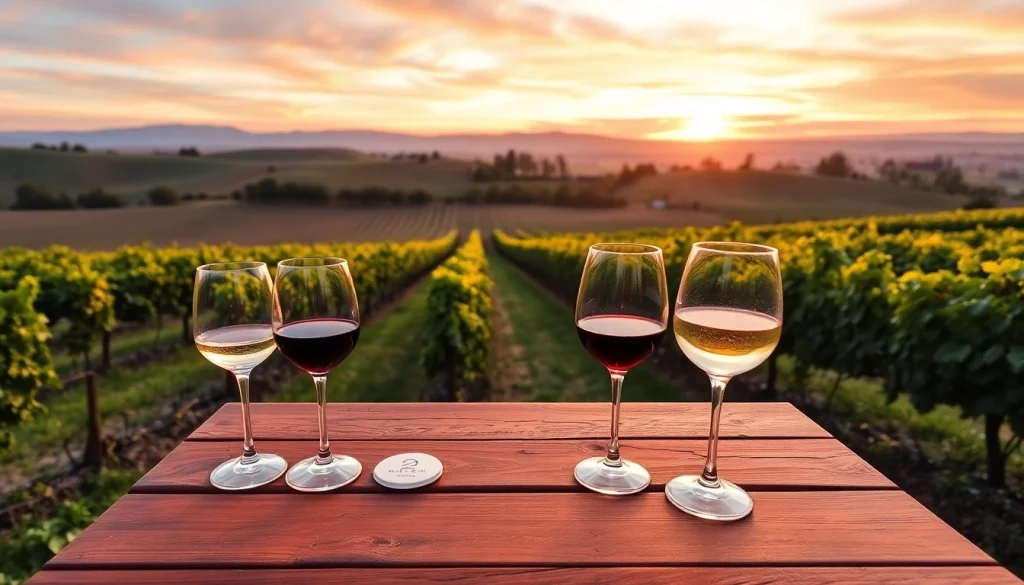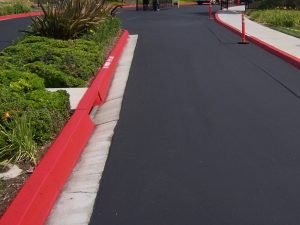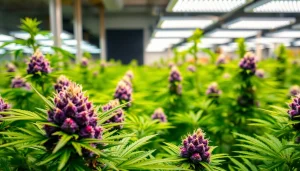Indulging in the Richness of Sacramento Wineries: A Journey through Wine Country

Understanding Sacramento Wineries: A Wine Lover’s Paradise
The burgeoning wine scene in Sacramento has transformed this California city into a wine lover’s paradise. With its favorable climate, diverse terroir, and flourishing wine culture, Sacramento Wineries have become a must-visit destination for both connoisseurs and casual drinkers alike. This article delves into the facets that make Sacramento’s wine region truly exceptional, from its unique terroir to the diverse wines produced and the vibrant culture of winemaking.
A visit to the thriving wineries located in and around the city showcases an exploration of the area’s distinct wine offerings. Whether you’re looking to savor an exquisite blend or engage with passionate winemakers, Sacramento Wineries promise experiences that are both memorable and educational.
The Unique Terroir of Sacramento
Terroir, a French term encompassing the environmental factors that affect a wine’s overall character, is an essential aspect of the winemaking process. Sacramento’s unique terroir is characterized by a blend of climate, soil types, and geography that contribute to the quality and diversity of its wines. The Sacramento Valley benefits from warm, sunny days and cool nights, creating optimal conditions for growing grapes.
The rich, fertile soil in the region varies from sandy loam to clay, allowing winemakers to cultivate a variety of grape types. This diversity supports an array of flavors and styles, making Sacramento Wineries a playground for wine exploration. Many wineries incorporate estate-grown grapes, allowing for a true expression of the region’s distinct terroir in every bottle.
Types of Wines Produced in Sacramento Wineries
Sacramento Wineries produce a wide array of wines that cater to varying palates. The region excels in both red and white varietals, enabling visitors to discover everything from robust Cabernet Sauvignons to refreshing Sauvignon Blancs and delicate Chardonnays.
Some standout varietals being produced include:
- Sauvignon Blanc: Known for its crispness and refreshing citrus notes, this white wine is a summer favorite, often featuring green apple and floral aromas.
- Chardonnay: This versatile grape can produce a range of styles from buttery to lean, allowing winemakers to craft wines that showcase the subtleties of the terroir.
- Cabernet Sauvignon: Renowned for its bold flavor, this red wine typically features dark fruit flavors and robust tannins, making it an excellent match for hearty dishes.
- Zinfandel: This grape is prized for its jammy fruit character and spice, often embodying the essence of California wine culture.
- Tempranillo: Increasingly popular in the Valley, Tempranillo offers rich flavors of cherry and plum, with a hint of earthiness that pairs beautifully with rustic cuisine.
History and Culture of Winemaking in Sacramento
The history of winemaking in Sacramento is rich and filled with tradition. With the gold rush in the mid-1800s, the city became a critical hub for transport, trade, and agriculture, including viticulture. Early settlers recognized the region’s potential for grape cultivation, leading to the establishment of vineyards and wineries.
Over the decades, the industry has grown, with a renewed focus on sustainable practices and organic farming techniques. Today, many wineries champion local grapes sourced from the Sacramento Valley, engaging in environmentally-friendly practices that support local ecosystems.
The culture surrounding Sacramento Wineries is as diverse as the wines themselves. Many wineries offer not just tastings but immersive experiences that include pairing dinners, live music events, and educational tours. This community-oriented approach fosters a connection between winemakers and visitors, enriching the overall experience.
Planning Your Visit to Sacramento Wineries
Before embarking on your wine journey, proper planning can enhance your experience significantly. From the timing of your visit to the layout of your itinerary, every detail matters when exploring the captivating Sacramento wine region.
Best Times to Explore the Wineries
The prime time to visit Sacramento Wineries is during the spring and fall months. During these seasons, the weather is temperate, making it ideal for outdoor tastings and vineyard tours. Spring brings vibrancy with blooming vines, while fall showcases the beautiful harvest season, where visitors can witness the grape-picking process.
Summer months can be quite hot, but they also offer myriad events, including wine festivals and outdoor concerts. Winter, while cooler, can provide a quieter and cozier experience, allowing for leisurely tastings and intimate gatherings.
Creating an Itinerary for Winery Visits
A well-organized itinerary can optimize your winery exploration. Begin by selecting a few key wineries that pique your interest based on their offerings, atmosphere, and events. Ideally, plan to visit two or three wineries per day to allow ample time for tasting sessions without feeling rushed.
Consider the location of each winery to minimize travel time. Grouping wineries that are close together will help you maximize your experiences. Moreover, verify whether reservations are necessary, especially for special tastings or events. An organized approach can lead to a fulfilling wine adventure.
Transportation Options for Winery Tours
Transportation is a crucial aspect of planning your winery visits. Many wineries provide shuttle services, but if you’re planning to explore multiple locations, consider hiring a driver or joining an organized tour. This way, you can fully indulge in the tastings without worrying about transportation.
Alternatively, some visitors enjoy cycling from one winery to another during the warmer months, combining fitness with fun. Just ensure that you have a designated driver or means of transport for the return journey. Rideshare services are also widely available, providing a convenient option for safe travels.
Wine Tasting Etiquette and Tips at Sacramento Wineries
To make the most out of your wine tasting experience, understanding basic etiquette and having a few tips up your sleeve can go a long way. These pointers will help you navigate any tasting room with ease, ensuring a positive experience for both you and the staff.
How to Choose the Right Wines to Taste
When presented with a menu of wines, it can be daunting to choose which ones to taste. Start by discussing your preferences with the tasting room staff; they are often passionate and knowledgeable and can guide you through selections based on flavor profiles you enjoy. Don’t hesitate to ask for recommendations or even to taste a few wines from various categories.
Balancing your selections can provide a comprehensive experience. Opt for a mix of whites and reds, or explore specific varietals that are prominent in the region. Many wineries will also offer flights, which allow you to sample smaller pours of multiple wines for a broader overview of what they produce.
Understanding Wine Labels and Ratings
Wine labels provide valuable information that helps you choose wisely. Familiarize yourself with the key elements of a wine label, such as the grape variety, the region of origin, and the vintage year. These factors significantly influence the characteristics and quality of the wine.
Additionally, many wine enthusiasts consult ratings from established wine critics and publications for guidance. While ratings can be helpful, it’s important to remember that personal preference plays a vital role in wine enjoyment. Consequently, do not solely rely on ratings—trust your palate!
Engaging with Winemakers and Staff
Engaging with the winemakers and tasting room staff can enrich your experience immensely. These individuals are often eager to share their knowledge about the wines, the winemaking process, and the unique aspects of their vineyard. Ask questions about their viti-culture, challenges they face, and the stories behind their wines. This interaction helps establish a personal connection and provides insights that can deepen your appreciation for the wine you’re tasting.
Events and Festivals at Sacramento Wineries
Sacramento Wineries frequently host a variety of events and festivals that celebrate the art of winemaking and encourage community involvement. These gatherings provide ideal opportunities for visitors to immerse themselves fully in the local wine culture.
Annual Wine Festivals You Shouldn’t Miss
One of the most anticipated annual events is the Sacramento Harvest Festival, which takes place during the grape harvest season. This festival gathers numerous wineries, allowing guests to sample wines, engage with winemakers, and experience the spirit of the harvest festivities.
Another notable celebration is the Wine and Chocolate Weekend, where wineries pair their finest selections with exquisite chocolates, creating an indulgent experience for attendees. Such events elevate the visiting experience, making them highly recommended for wine lovers.
Seasonal Events and Tasting Opportunities
In addition to large festivals, many wineries offer seasonal events showcasing unique tasting opportunities. Some establish themed evenings featuring wine pairings with local gastronomy or seasonal produce. As the harvest approaches, special tours may involve grape picking or educational vineyard strolls, giving participants a behind-the-scenes look at the winemaking process.
Keep an eye on local listings and winery websites to catch announcements of events during your planned visit. Every season can bring forth surprises that enhance your overall experience.
Unique Experiences Offered by Local Wineries
Many wineries craft unique experiences that go beyond traditional tastings. For instance, some offer vineyard picnics, where guests can enjoy meals paired with carefully selected wines amidst picturesque landscapes. Others host cooking classes inspired by local cuisine, incorporating their wines to demonstrate how to create perfect pairings.
Active engagement with the wine community is also common, with some wineries providing volunteer opportunities during weekends, giving visitors the chance to partake in vineyard activities. This hands-on experience not only enriches your knowledge but also creates lasting memories.
Supporting Local Agriculture through Sacramento Wineries
The rise of Sacramento Wineries plays a crucial role in supporting local agriculture and sustainable practices. Many wineries actively engage in the farm-to-table movement, sourcing ingredients from local farmers and producers.
The Farm-to-Table Movement in Sacramento
The farm-to-table movement emphasizes the importance of using fresh, local ingredients and supporting local economies. Sacramento’s wineries often partner with regional farmers to create farm-fresh pairings that promote sustainability and quality. This practice not only enhances the dining experience but also nurtures community relationships.
By consuming locally sourced products, guests contribute to environmental stewardship and bolster the livelihoods of local farmers. As such, the relationship between the agricultural sector and the wine industry thrives, creating a positive feedback loop that benefits both.
Sustainable Practices in Local Winemaking
Many Sacramento Wineries are at the forefront of incorporating sustainable practices into their operations. This encompasses organic farming methods, water conservation techniques, and natural pest control strategies. By prioritizing eco-friendly practices, wineries are not only protecting the environment but also enhancing the quality of their wines.
Several wineries have implemented solar energy technologies, reducing their carbon footprint and promoting renewable energy use. This commitment to sustainability resonates with many modern consumers, further strengthening the appeal of Sacramento Wineries.
How Wine Tourism Benefits the Local Community
Wine tourism has a significant positive impact on the local community. Visitors contribute to the economy by supporting wineries, restaurants, and hotels, thus creating jobs and boosting local businesses. The engagement of tourists in local winemaking also encourages preservation of the agricultural landscape and supports sustainability efforts.
As Sacramento continues to rise as a wine destination, it fosters cultural tourism, bringing more attention to local arts and cuisine. Events and activities surrounding wine education and tastings also promote a sense of community, bringing together individuals who share a passion for wine.




